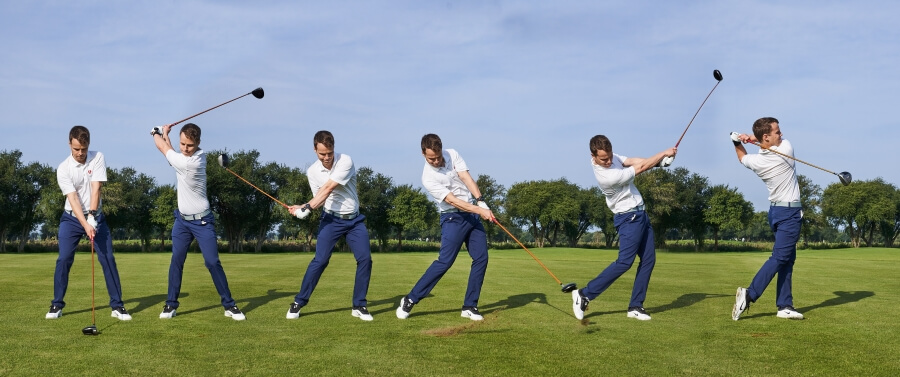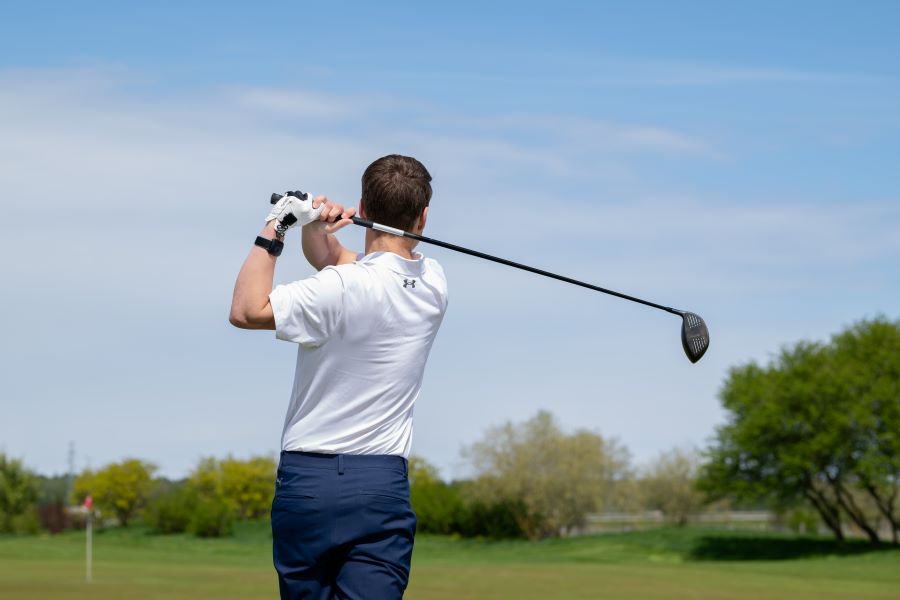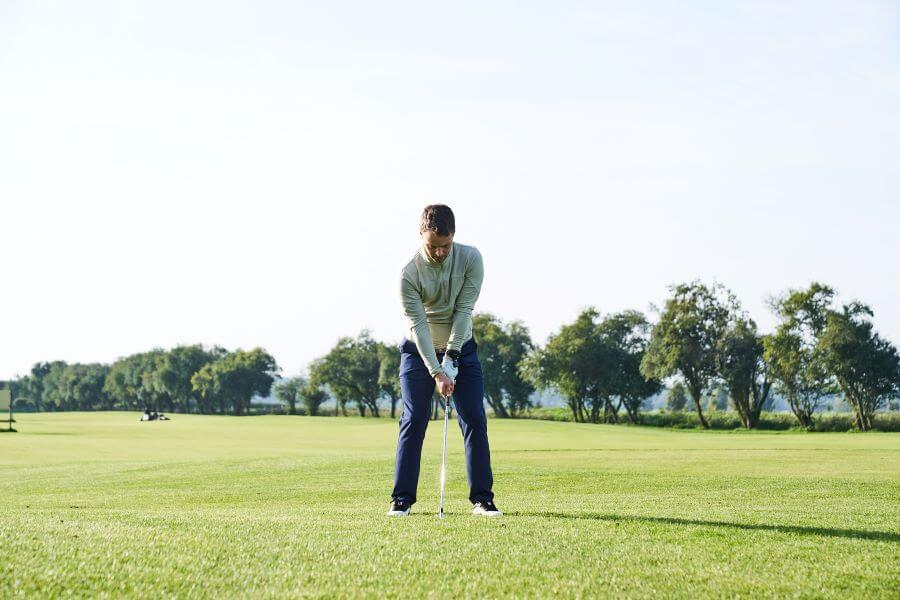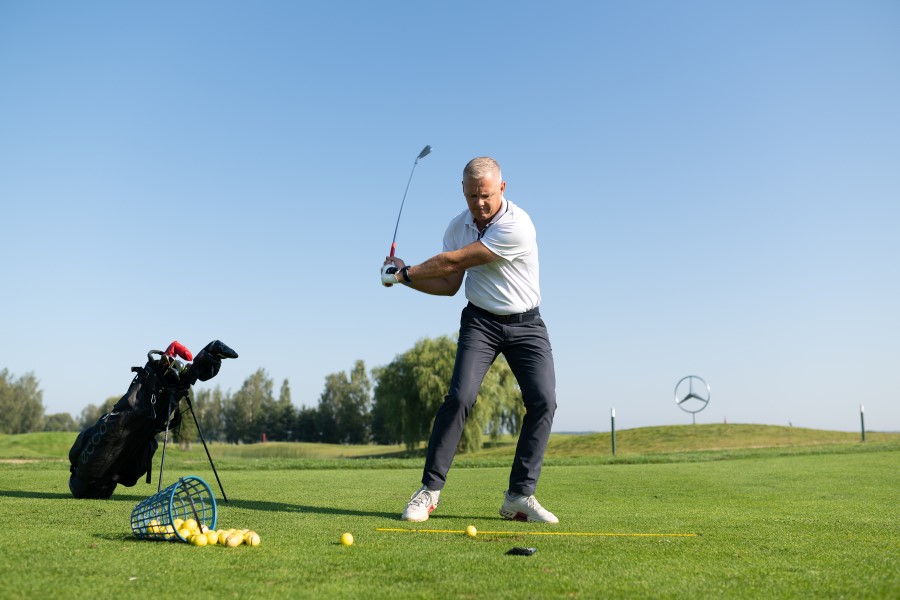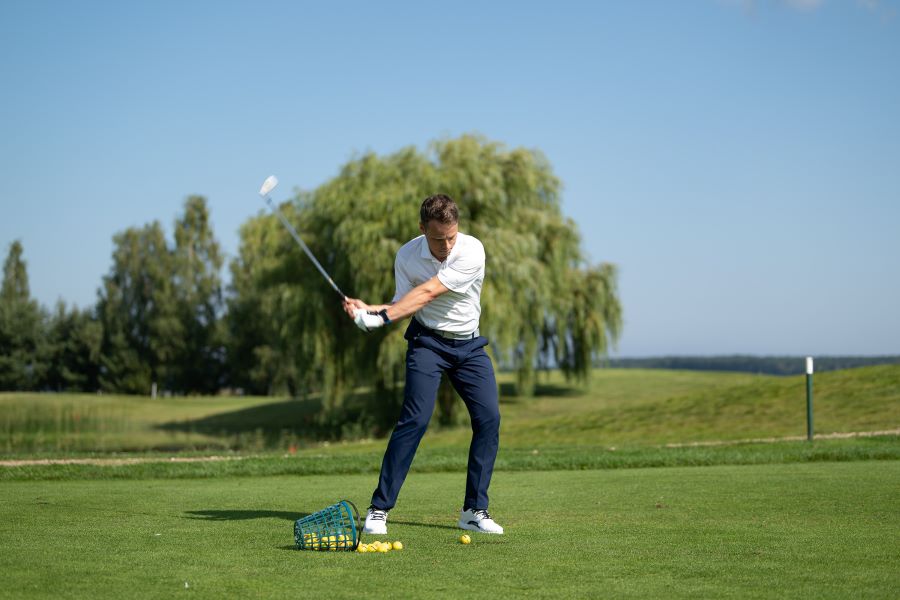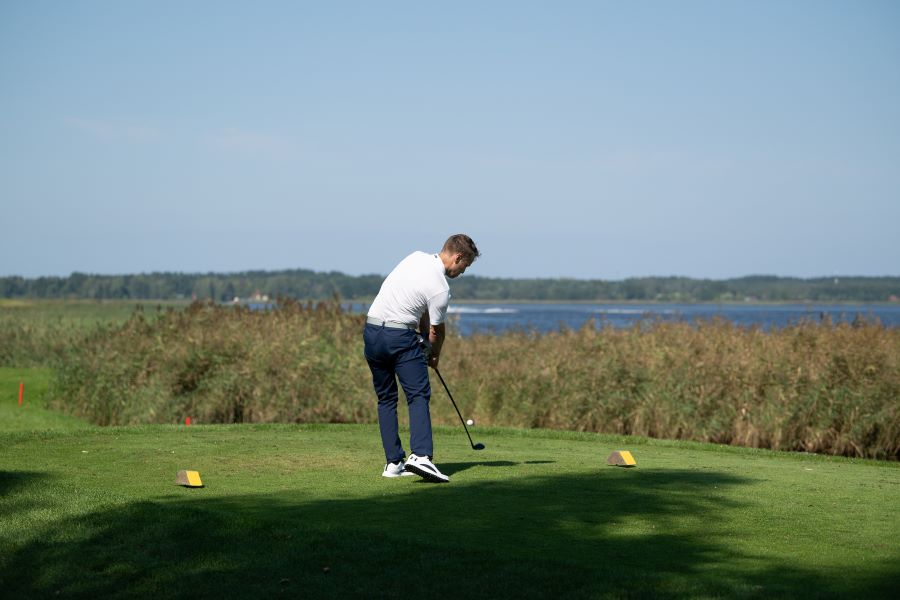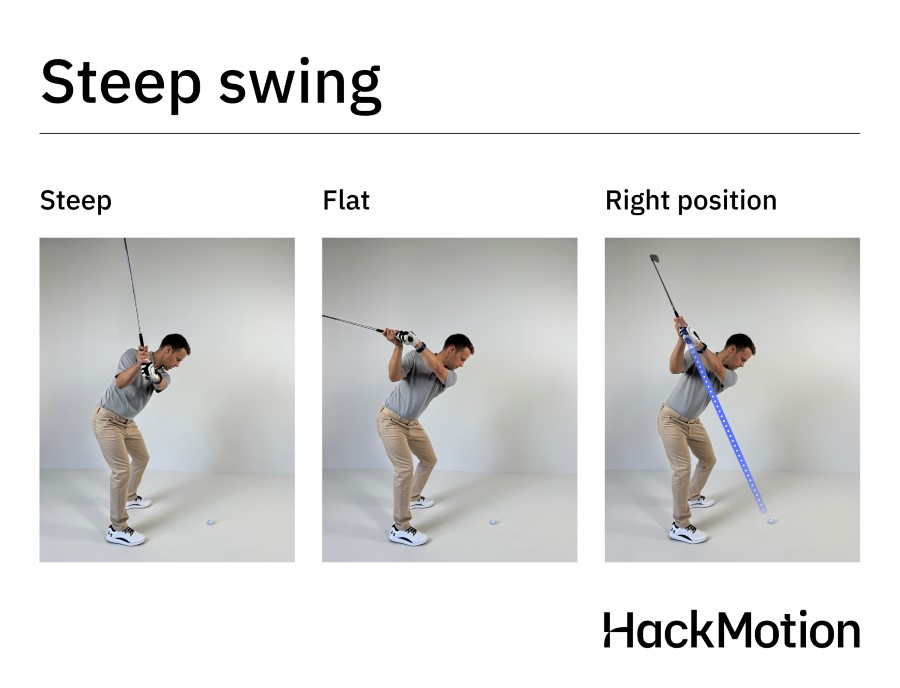Stop Hooking the Golf Ball: 6 Simple Steps to Fix Your Hook
The frustrating thing about a hook is how good it can feel when it first leaves the clubface. Typically, hooks have power, and you might see the ball fly straight before it suddenly veers left. It’s hard to watch.
After analyzing over 1,000,000 swings from some of the world’s top golfers, we’ve pinpointed the exact movement in the swing that causes hooks – and more importantly, we can show you how to fix your hook.
Fortunately, fixing a hook is not only achievable but often easier than remedying a slice. If you’re ready to correct your hook and consistently find the center of the fairway, you’re in the right place.
How to Fix a Hook in Golf (Key Takeaways)
If you don’t have time to head to the range and work on all of our hook fixes and cures right now, here are a few of the most important facts to know about how to fix a hook in golf:
- Make sure your ball position is not too far forward.
- Check that your legs and shoulders are square to your target (not closed).
- Grip strength should be neutral; a strong grip with the left hand (right handed golfers) turned too far to the right is not the correct setup to fix a hook.
- Shallow swing path can make a hook worse, make sure you aren’t taking the club back inside as the first move on your takeaway.
- Too much flexion in the lead wrist at the top of the swing and again at impact can lead to a closed clubface; use HackMotion to check your wrist angles.
If you prefer to learn by watching, this video gives you a complete rundown on how to fix your hook.
Contents
Causes of a Hook in Golf: What to Look For
A golf hook is caused by a closed clubface at impact. If your clubface is closed, the ball goes left.
However, a few things can cause that closed clubface to happen.
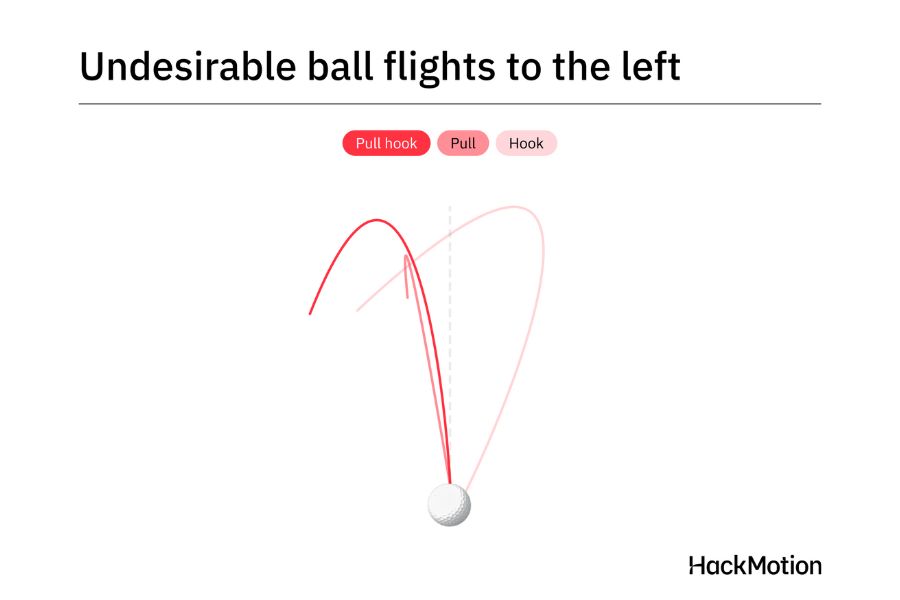
A Grip that is Too Strong
When golfers slice the ball, the first thing that a coach will often tell them to do is strengthen their grip.
As you can imagine, the opposite is true for golfers that hook. If your grip is too strong, your left hand (for a right-handed player) will be twisted too far to the right.
The left hand turns to a strong position, in turn, requires the right hand to fit more on the underside of the golf club.
From this position, the hands and wrists have a more dominant role in the clubface and what it does at impact. It’s too much power. Moving the hands to a slightly weaker position can get the clubface more neutral at impact.
Setup Lines are Crossed
Amateur golfers are often completely unaware of how their setup position impacts their golf swing.
Most players have feet going one way, clubface another, and even hips and shoulders could be on their own line. This is not ideal.
Use alignment sticks when you practice!
- Video Timestamp – 0:00 – 0:52
If your clubface is not square to the rest of your stance, you could be set up to hit a hook.
Shallow Swing Path
A shallow swing path alone is not always the cause of a hook.
When you combine the shallow swing path with the closed clubface, the hook will get considerably worse. A more neutral swing path with a square clubface is the best position for any player.
From this position, you can focus more on speed and consistency through impact and forget all the other minute details.
Poor Wrist Action
The wrist action in your golf swing can also be a major culprit when hooking the golf ball. Your wrist position at impact determines the ball flight of your golf shot.
HackMotion can diagnose the wrist issue and give you the proper feedback in your practice routine to improve it.
HackMotion is like bringing a coach with you to the driving range.
This video shows how HackMotion can read your wrist angle on the takeaway, at the top of the swing, and again at impact.
With a tool like this, you will learn where the wrist issues are occurring exactly in your swing. For most golfers, it happens right in the takeaway.
6 Simple Steps to Fix the Hook in Your Golf Swing
Now that you have a better idea of how to determine what is causing your hook let’s break down how to fix it.
1. Grip Adjustment
A neutral grip is best for hitting a straight shot.
Grip Setup – Key Points
- Hold the club primarily in the fingers of your left hand, not the palm.
- Place your left hand so the thumb points just right of the shaft’s center line.
- At address, avoid seeing too much of the top of your left hand — this indicates a weak grip.
- Interlock or overlap your right hand over the left, with the right palm covering the left thumb.
Play around with a strong, weak, and neutral grip on the driving range; you will see how much of a difference it makes in your game.
To fix a hook, a slightly weaker grip is often key.
Use your HackMotion to check on the consistency of your grip position. If you can put your hands on the club the same way each time.
2. Align the Clubface Correctly to Start
A square clubface is where the bottom of the face sits at a 90-degree angle.
Golfers who hook the ball would decrease this angle and have the clubface pointing left of the target.
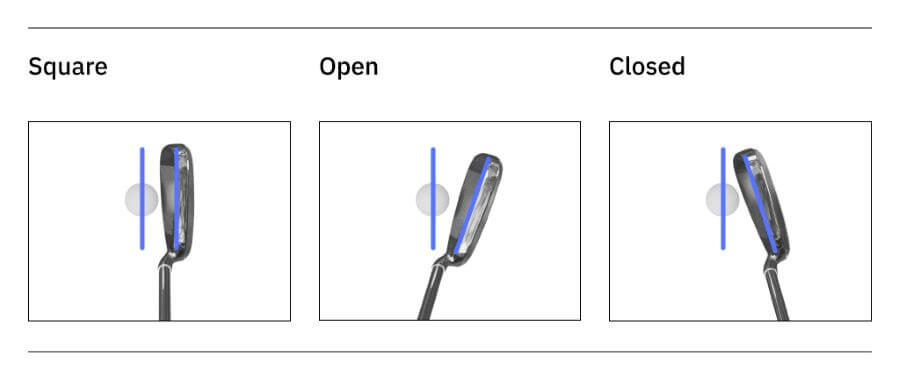
My favorite way to determine if my clubface is square is to find a straight edge, like the driving range station or a door jam, and place the club at the base.
3. Swing Path Alignment
As long as your clubface is closed, the ball will go left regardless of your swing path. The shallow swing path can worsen the hook, but the wrist action is usually the root cause of the issue.
You can set up an alignment stick in the ground a few feet behind you, away from where it could get hit with the club, just like Rob did in the video below.
- Video Timestamp – 0:53 – 2:26
As you swing back, see if your club is on a matching plane as this alignment stick or if it is starting below it. If your swing path is starting out below it, you may have a swing that goes more around your body.
A shallow/rounder swing makes more of a hook-type swing path, especially if the rotation in your swing is not timed perfectly.
4. Wrist Action on the Takeaway
One of the best ways to check if your club face position is closed is to take the club back to waist high.
If you swing back to waist high, look at where the toe of the club is pointing.
- A neutral clubhead will have the toe pointing to the sky.
- A closed clubface will have the clubhead pointing down towards the ground.
The wrist action on the takeaway can make or break your golf swing the entire way. With the HackMotion wrist sensor, you can set the wrist angle so that you are alerted if you are too close on the takeaway.
5. Squaring the Clubface at Impact
Did you know that sometimes golfers (myself included) have a slightly closed clubface the entire time they swing?
These players know how to manipulate the clubface at impact to square it up and get a great shot.
Learning how to control your wrist mechanics and get the lead wrist as close to flat as possible is the best way to eliminate the hook. Turning a hook into a little draw is often a desirable adjustment for golfers.
6. Equipment Check
Setting your driver to open is not going to entirely fix your hook; you will also have to make some clubface angle adjustments.
A golf club fitting can give you some idea of what clubs you should be using and whether you need to change.
I’ve seen quite a few players using clubs that are too short for them, and this causes a significant hook. Sometimes, slight adjustments can be made to the equipment, and a new club does not need to be purchased.
Troubleshooting the Hook in Golf: Things You Should Know
At this point, you have plenty of details on how to fix your hook. Here are a few more tips and a few of our best drills to get rid of your hook for good.
- Don’t aim right of your target when you start hooking the golf ball; you may make the hook worse by overcorrecting the aim.
- Check to ensure you are not playing with a draw-biased golf club; these are designed for golfers who slice the ball, not those who hook it.
- It’s still a good idea to feel like you are swinging out to your target; this is necessary to generate power, distance, and accuracy.
- When the tempo gets a little quick, the results of a hooked golf shot could worsen. Ease up on your tempo and see if that improves the issue.
- If you have the opportunity, take a video of your swing, compare the original video with the video after you make changes, and see how they differ.
Practical Drills to Fix a Hook
The best way to fix a problem in your golf game is to find a way to “feel” what the issue is. Once you feel it, you can learn to repeat it.
Here are some of the best drills to get you to feel that square clubface at impact and hit a straight shot.
HackMotion Feedback
You may find some outliers if you can determine your wrist patterns at setup, the top of the backswing, and then again at impact.
For most golfers, the hook issues happen at the top of the swing, with too much flexion in the left wrist.
Set the audio feedback on the HackMotion to alert you when your wrist angles fall outside the range of what would lead to a square clubface.
The best thing about HackMotion audio feedback is the fact that it occurs in real-time. Most golf technology alerts you to issues after hitting the ball.
The quickest way to fix your swing is to feel the issue and be alerted to it simultaneously.
Be Aware of the Clubface
If your golf clubface tends to be closed and is causing your hook, you can learn to check the clubface at different positions in your swing.
- Setup to hit a regular shot.
- Swing back to halfway without taking your head off the ball.
- Look back to see where the clubface is. Has it opened? If not, open it slightly so that it is square, with the toe pointing up towards the sky at waist high.
- Repeat this drill until you are able to feel that slight opening of the clubface on the takeaway.
- Learn to incorporate this into your full swing if you feel it could be helpful.
Create a Runway
Use your golf alignment sticks to create a path for your golf club to swing through. The first club will be parallel to the target line, and the second will be slightly outside the target line and aimed more at the target.
Leave room for you to hit golf balls between these two sticks. They are there for your visual aid.
Practice swinging the club along this inside-out path, where you hit shots between the two alignment sticks. You will stop from swinging too much from the inside.
45 Degree Exit Drill
Eric Cogorno has a 45-degree exit drill to help who are hooking the ball. Sometimes, the idea of the inside out gets slightly exaggerated with those who hit a hook.
With this 45-degree exit drill, you can learn that you can come from the inside but still finish a little low and left.
When first working on this drill, do it with an 8 iron and use about 70% swing speed.
45° Exit Drill – Step by Step:
- Set the Stick: Place an alignment stick or club on the ground at a 45° angle to the right of your target line (for right-handed golfers).
- Start with Short Swings: Use a mid-to-short iron and begin at 50% swing speed, hitting balls about half your normal distance.
- Focus on the Exit Path: In your follow-through, feel the clubhead swinging high and to the right, over the 45° stick.
- Extend the Arms: Avoid collapsing or chicken-winging. Keep your arms extended through impact for a solid release.
- Add Face Rotation If Needed: If the ball pushes too far right, allow a bit of forearm rotation to square the face.
- Build to Full Swings: Once you’re consistently starting the ball right and drawing it back, progress to fuller swings.
Club Path Exit Drill
In this drill, Danny Malcolm gives you a unique way to work on your club face as you swing through the ball.
He shows how the golfer who hooks tends to struggle with getting the club to go left after impact, and this drill with a simple alignment stick will fix it.
Club-Path Exit Drill – Step by Step:
- Set the Stick: Place an alignment stick just ahead of the ball, angled slightly forward.
- Short Swings: Use a 6- or 7-iron. Swing left of the stick while keeping the clubface open through impact.
- Feel the Opposite: Focus on a path left with a face slightly right — the opposite of a hook.
- Build Up: Progress to longer swings while maintaining the same path and face relationship.
- Remove the Stick: Try full swings without the stick, continuing to feel a fade or straight shot.
Summary
I would rather fix a hook than a slice any day. Hooking the golf ball usually means closing the clubface at some point during your swing.
Find out if this happens at set up, during the takeaway, at the top, or on the downswing.
Wrist action is a significant factor in determining if your clubface is closing, and the HackMotion helps players perfect wrist angle throughout the entire swing. It is like bringing your coach to the driving range.





